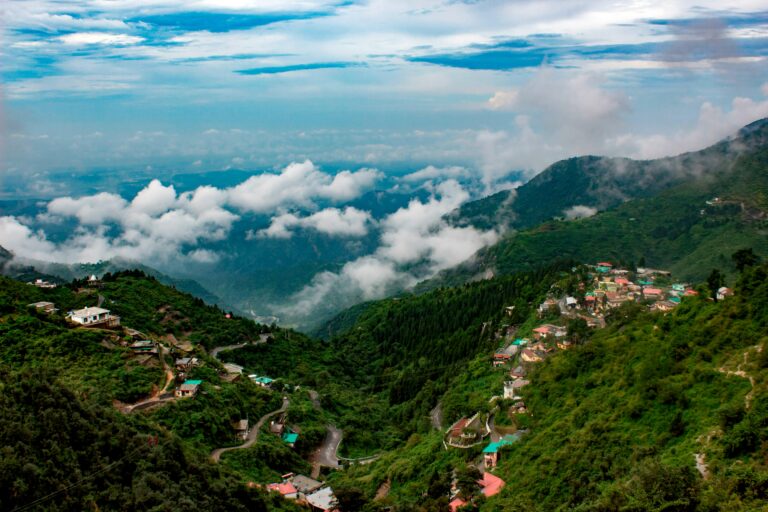History of Mussoorie – The Queen of Hills

Mohit Bangari
Explore Himalaya With Me!!

Mussoorie, known as the Queen of Hills, is one of the most famous hill stations in India. Nestled in the Garhwal Himalayas of Uttarakhand, this picturesque town has a rich and fascinating history. From its discovery in the early 19th century to becoming a major tourist destination, Mussoorie has seen it all. The town was once a favorite summer retreat for the British and has played a role in India’s freedom struggle. Let’s dive into the historical journey of Mussoorie in detail.
The Early Days – Discovery of Mussoorie
Before the British arrived, the area around Mussoorie was inhabited by the Jaunsari and Garhwali tribes. The region was covered with dense forests and was a part of the Tehri Kingdom. It remained largely unexplored until the early 19th century.
In 1823, a British officer named Captain Frederick Young, along with an official named FJ Shore, climbed up the hills from Dehradun. They were mesmerized by the beauty of the place and decided to build a shooting lodge. Young was a keen explorer and is credited with founding Mussoorie as a British settlement.
Once the news spread about this scenic hill, British officials and traders started coming in large numbers. Over time, the region transformed from a quiet forest area into a bustling colonial town.
British Influence and Growth
Mussoorie quickly gained popularity among the British, especially for its cool climate and breathtaking views of the Himalayas. It became a favorite retreat for British officers and their families to escape the scorching summers of the plains.
By 1827, Mussoorie had started developing as a town. Several bungalows and churches were built, including the famous Christ Church (1836), which is the oldest church in the Himalayan region. Schools, clubs, and commercial establishments followed.
In 1842, Captain Young introduced tea plantations in the region, though they did not last long.
By the mid-19th century, Mussoorie had become a fashionable hill station.
It was home to British officers, military officials, and businessmen who established grand estates here.
Mussoorie was often compared to Shimla, which was the summer capital of British India. While Shimla was more administrative, Mussoorie was preferred for leisure and holidaying.
The Role in India’s Freedom Struggle
Mussoorie was not just a British retreat; it also played a role in India’s freedom movement. Many freedom fighters and revolutionaries found shelter here.
In 1929, Mahatma Gandhi visited Mussoorie and stayed at the Birla House. His visit to the town is still remembered by the locals.
The famous Lala Lajpat Rai also spent time in Mussoorie.
Mussoorie was one of the places where Nehru’s family used to spend summers.
During World War II, the British government used Mussoorie as a center for administrative activities.
Another significant aspect of Mussoorie’s history is that Tibetans started settling here after the Chinese invasion of Tibet. In 1959, when the 14th Dalai Lama fled Tibet, he took refuge in Mussoorie for a while before moving to Dharamshala. Even today, Mussoorie has a strong Tibetan influence, especially in areas like Happy Valley.
Post-Independence – Development and Tourism
After India gained independence in 1947, the British left Mussoorie, but their influence remained. Many of the colonial-era buildings, schools, and hotels continued to operate. Over time, the town transformed into a major tourist destination.
The Library Bazaar, established during the British era, remains one of the most vibrant parts of the town.
Famous hotels like Savoy and Mansion House continue to remind visitors of the grandeur of the past.
Several prestigious schools like Woodstock School, St. George’s, and Wynberg-Allen have made Mussoorie an educational hub.
By the late 20th century, Mussoorie saw a boom in tourism. The Mall Road became the heart of the town, filled with shops, restaurants, and hotels catering to visitors from all over India.
Mussoorie Today – A Blend of Heritage and Modernity
Today, Mussoorie is one of the most visited hill stations in North India. It has managed to retain its old-world charm while embracing modern tourism.
The British-era architecture still stands tall, blending with modern cafes and resorts.
Gun Hill, Kempty Falls, Camel’s Back Road, and Lal Tibba remain top attractions for tourists.
Adventure activities like trekking, paragliding, and cable car rides have added a new dimension to tourism.
The Tibetan community has contributed significantly to the local culture, bringing in Buddhist monasteries, traditional handicrafts, and authentic Tibetan food.
Despite rapid commercialization, Mussoorie still holds a nostalgic charm, reminding visitors of its colonial past and historical significance.
Conclusion
Mussoorie’s journey from an unexplored mountain ridge to a bustling British-era hill station and now a modern tourist hotspot is truly fascinating. The town has witnessed the footsteps of British officers, freedom fighters, Tibetan exiles, and generations of tourists. Even today, its colonial heritage, natural beauty, and vibrant atmosphere make it one of the most beloved hill stations in India.
If you ever visit Mussoorie, don’t just admire the views—take a walk through its historic lanes, visit its old churches, and relive the past that shaped this beautiful town.
Article by – Mohit Bangari
Also read- History of IIT Roorkee – A Detailed Journey of India’s Oldest Engineering College
Related Post

Mohit Bangari
Explore Himalaya With Me!!







